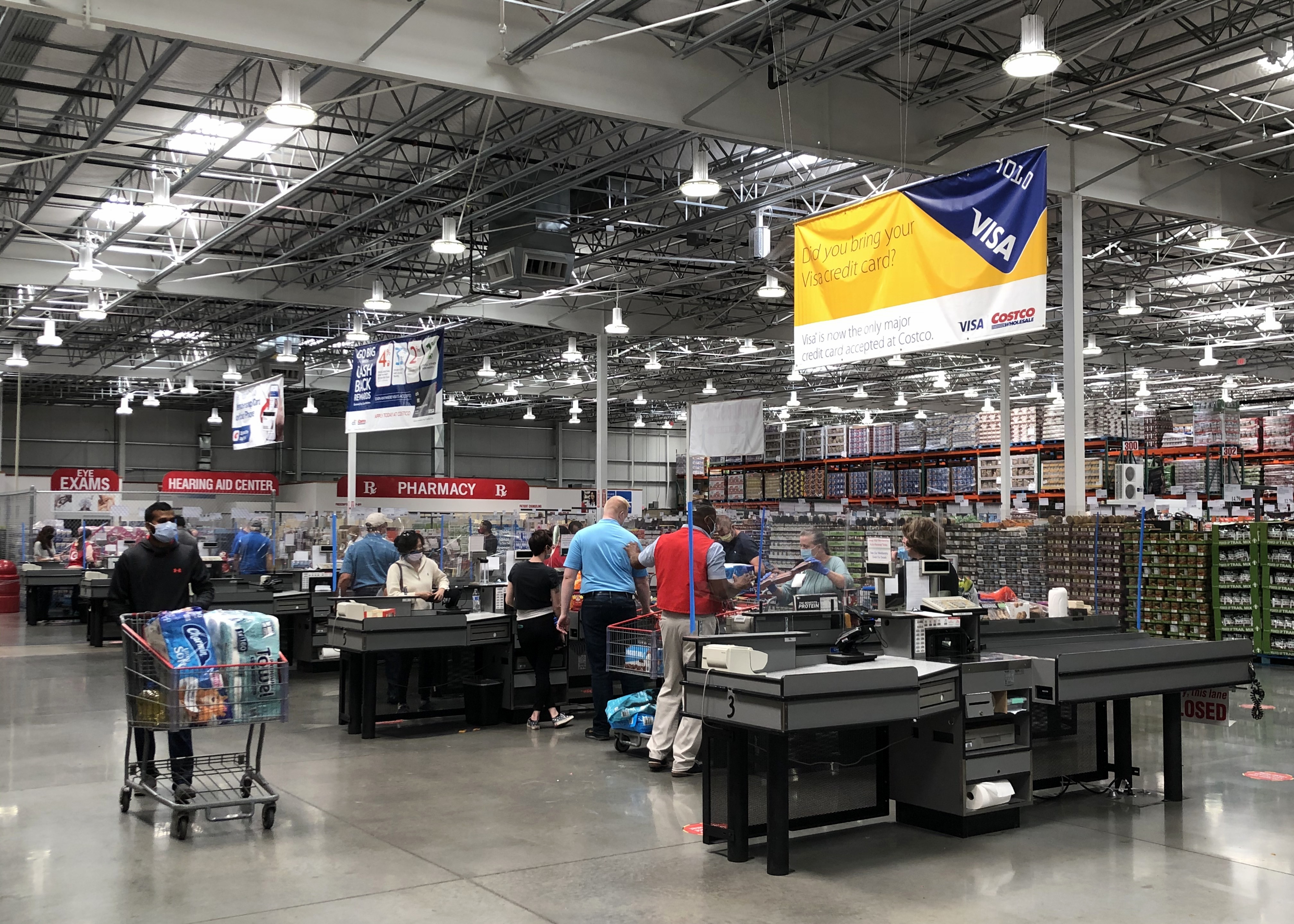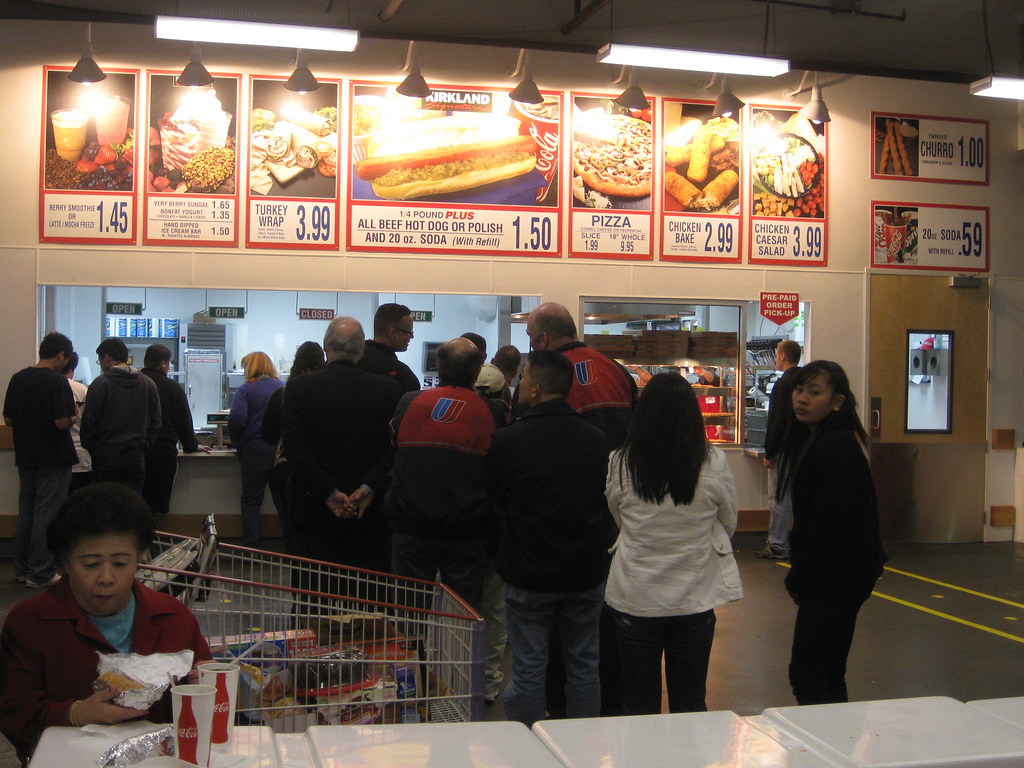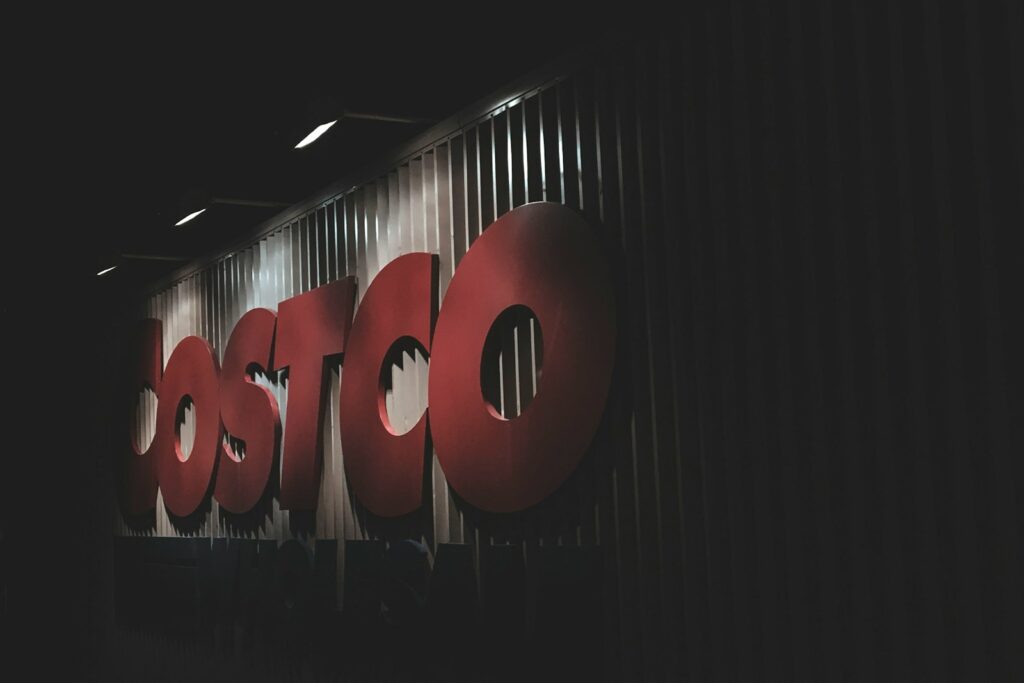Okay, fellow bulk-buying enthusiasts, buckle up because we need to talk about Costco. For years, it’s been our happy place—a sanctuary of giant carts, free samples (sometimes!), and that legendary food court. But let’s be real, the warehouse giant is definitely entering a new era, and it comes with stricter rules, slightly higher fees, and less room to bend the rules.
If you’ve ever cruised into Costco flashing a membership card that wasn’t technically yours or popped into the food court just for a cheap hot dog without being a member, well, those breezy days are pretty much over. Costco isn’t just changing how you check out; they’re totally redefining what it means to hold one of those coveted membership cards, especially as we navigate 2025.
The biggest shift hitting shoppers is right at the front door. Remember just casually showing your card to the friendly face checking memberships? Yeah, that’s changing. Costco is rolling out these new kiosks where you actually have to scan your membership card before you even step inside. And here’s the kicker: the kiosk will flash your membership photo to an employee.
Why all this sudden scrutiny? It’s pretty clear. Costco is cracking down hard on card-sharing. If the person trying to get in doesn’t match the photo linked to the card, they won’t be allowed entry. This is creating some definite awkwardness, particularly for couples or families who share one membership but only have a photo for one person on the account.
:max_bytes(150000):strip_icc():focal(749x0:751x2)/costco-membership-card-080824-0a24595cb6fc4a1b9ca10111328a32d4.jpg)
Beyond the initial scan, these tightened rules extend to checkout, especially at self-checkout stations. You used to just scan your items and go, but now staff are being trained to verify identities. This means you’ll need to show a photo ID if your card doesn’t include a picture and provide both your card and ID at self-checkout. Think of it like needing a secret handshake, but for toilet paper and giant bottles of ketchup.
Speaking of things that are changing, let’s talk about the food court. Ah, the food court! Home to that amazing $9.95 pizza and the legendary rotisserie chicken. For many, it was the perfect pit stop, and sometimes, you could even sneak in for a slice without a membership, especially if there was an external entrance.
Well, sad news for the non-member snackers among us. As of April 2024, that loophole was officially closed. You now absolutely need an active Costco membership to order food, even at locations that used to feel more accessible. No membership? Sorry, no churro for you.
It’s definitely a move that’s caused a bit of a stir, especially for folks who relied on the food court for a quick, affordable bite. But from Costco’s perspective, the message is loud and clear: these perks are meant for the folks who pay for the membership, period.

So, why is Costco shaking things up so much? It really boils down to managing costs, maintaining the value and integrity of the membership model, and protecting their brand in a rapidly changing retail world. Think about it—rising expenses, more online competition, labor challenges, and inflation are all pressures businesses face.
By ensuring that only paying members are benefiting from all the services and access, Costco is working to protect the core financial model that allows them to keep those prices relatively low and the selection vast. It’s about doubling down on what makes their system work: providing great value behind a limited-access gate.
As you might expect, these changes haven’t landed the same way with everyone. On one side, you have customers who are totally on board, seeing these stricter rules as a way to preserve the exclusive value of paying for a membership. They feel it’s only fair that those who pay the annual fee are the ones who get to enjoy the benefits.

On the other hand, the online world—from social media feeds to comment sections—is buzzing with less-than-thrilled reactions. Complaints are popping up about the extra steps required at the entrance and checkout, the hassle of needing photo ID, and, of course, the recent fee increases that happened before these policy changes. Some shoppers are even openly wondering if it’s time to check out competitors like Sam’s Club or BJ’s.
However, even among the complainers, there’s a common thread: many reluctantly admit that the quality, pricing, and overall package at Costco are still pretty hard to beat. As one Reddit user humorously put it, “Costco’s treating their memberships like they’re AmEx Platinum cards… and honestly, I respect it.” That sentiment seems to capture the mixed feelings many loyal shoppers have.
But hey, there might be a silver lining in all this. Costco suggests that these new entry procedures will actually eliminate the need to show your card at the exit. The promise? Faster checkouts overall. Now, whether that promised speed boost is genuinely worth the added steps at the front door for everyone is something we’re still waiting to see play out in practice.
Beyond these operational changes impacting members directly, it’s interesting to look at broader trends. According to a report from analytics firm Numerator earlier this year (on March 5th, to be precise), Black and Hispanic shoppers have actually been shifting their spending towards Costco. This report linked this shift, in part, to changes in diversity, equity, and inclusion (DEI) strategies happening at other retailers, like Target.
The report specifically noted that “Black and Hispanic households appear to be reducing visits at disproportionately high rates in the weeks following Target’s DEI rollback,” while Costco, which has kept a strong stance on DEI, saw a “notable increase of 7.7 million visits” compared to Target’s drop of nearly five million shoppers over four weeks ending February 9th. Experts like David Albert, chief insights officer at Collage Group, point out that inconsistency in a company’s message, or “seesawing back and forth,” is “what gets brands like Target in trouble,” suggesting that staying firm on commitments can build consumer trust. Even Costco CEO Ron Vachris has stressed that DEI initiatives actually help boost profits.
So, if you’re planning to stick with Costco—and let’s face it, most of us probably are—here are the simple things to keep in mind to stay in their good graces. First off, make double sure your membership is current, especially with those new annual rates in effect. It’s also a really smart idea to update your card with a photo if it doesn’t have one; Costco says it saves time at both the entrance and checkout. Always, always bring a valid ID with you when you shop, because you might need it for verification. And remember, that membership card is now your golden ticket even if you’re just craving a slice of that famous pizza.
These new policies might feel like a bit of a shake-up, but it seems Costco isn’t trying to be difficult just because. They’re clearly reinforcing the core idea of their business model. It’s all about that limited access, the promise of great value within, and ensuring that the membership you pay for genuinely means something substantial. So, the next time you head out for a massive pack of toilet paper or a gallon of maple syrup, just remember that little plastic card you carry is holding more weight and power than ever before.
Related posts:
Costco’s “Annoying” New Rule Affects Millions of Shoppers In Nevada!
Say goodbye to shopping as you know it – Costco is changing the rules and now every customer must adapt or be left out
Costco Reportedly Gains 7.7 Million Shoppers as Target Loses 5 Million Following DEI Policy Changes





